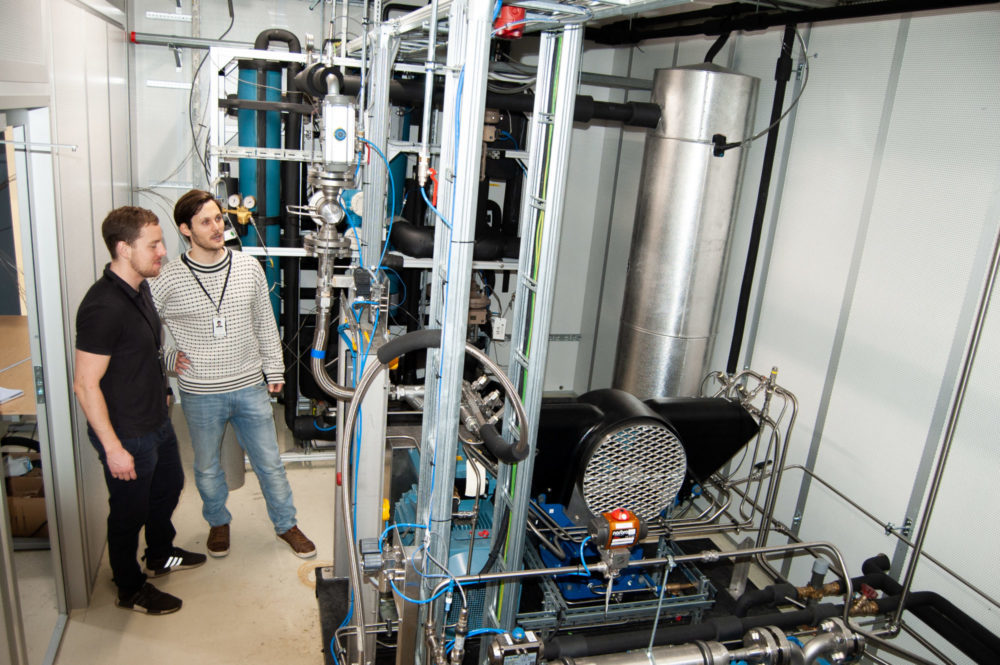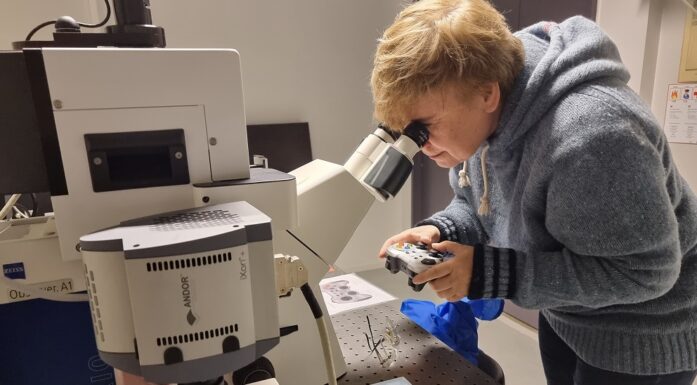Making it easier to capture CO2 in the cement industry
Cement manufacture accounts for as much as seven per cent of global greenhouse gas emissions. A new hybrid technology makes it easier and less expensive to capture and purify CO2 produced by the industry. And the technology can be retrofitted to existing plants.
Researchers at SINTEF have now upgraded a method used to capture greenhouse gases generated during the cement manufacturing process. The hope is that this technology can be used by cement factories and in other industrial processes in coastal areas and along European rivers, because the method is based on the liquefaction of CO2, allowing it to be transported by ship. It can also be retrofitted to existing plant.
Normally, the flue gases emitted from a cement factory contain about 20 per cent CO2. In order to transport and/or store the CO2 from these gases, they must first be scrubbed. The current minimum requirement is approx. 95 per cent purity. However, this process requires large amounts of heat and is thus energy-demanding.
The team of researchers is now proposing that the sector should utilise a hybrid technology that makes CO2 capture easier, more energy efficient, and better suited to CO2 transport by ship.
More than 99 per cent pure
“We propose a promising approach using a membrane filter combined with an in-house developed system involving forced concentration of the CO2 by liquefaction”, explains SINTEF researcher David Berstad. “We achieve this by cooling it down under pressure”, he says.
The membrane alone concentrates the CO2gases to approximately 70 per cent purity. It is currently standard to employ an additional membrane step to scrub the gas and achieve the necessary purity of 95 per cent. However, the research team’s method involving CO2 liquefaction is less energy-demanding, and also results in an even purer gas.
Measurements made by Berstad and his research colleague Stian Trædal during experiments with the new system carried out on a laboratory rig in Trondheim show levels of purity of at least 99 per cent.
“The best results that we have seen are about 99.8 per cent, but it is theoretically possible to achieve even higher levels of purity”, says Berstad. “The purer the gas the better, because it then requires less capacity to transport and/or store the CO2 in gas or liquefied form.

Measurements made by SINTEF researchers David Berstad and Stian Trædal (left) during experiments using the new system fitted to this lab rig in Trondheim show that by liquefying CO2 they can achieve purities of at least 99 per cent. Photo: Håvard Egge.
Electrical energy “replaces” steam
Another advantage of this process is that, unlike other systems, it uses electrical energy to cool and compress the gas instead of steam to regenerate solvents (chemicals that bind to the CO2 – ed. note) as is the case using conventional CO2 capture technologies.
Thus the hybrid CO2 capture process has no need of steam, which only very few industrial facilities in Norway and Europe have access to without having to construct an additional steam production plant.
Ship transport instead of pipelines
Another important benefit is that the liquefied CO2 can be transported by ship. This involves making CO2liquefaction an integral part of the capture process, preparing the CO2for transport by ship, which is the means stipulated in the plans for Norway’s full-scale CCS project.
“If CO2 is not to be transported by ship, but under high pressure in a pipeline, the liquefied CO2 is pumped to the required pressure at a temperature of minus 50 degrees before later being heated up again”, says Berstad.
Facts:
The hybrid technology has been developed as part of the CEMCAP project, which is funded by the Horizon 2020 programme. It involves 15 partners and has a budget of EUR 10 million. It was completed in October 2018. The project has been looking into five different CO2 capture technologies, and how they can be retrofitted to existing cement production plants.
For more information, click here: www.sintef.no/cemcap
The report "Experimental investigation of CO2liquefaction for CO2capture from cement plants"
The CO2 rig is funded by the ECCSEL infrastructure programme for CO2capture.
Multiple lab rig experiments
The CO2 condensation experiments carried out by the SINTEF researchers using their laboratory rig were carried out in autumn 2018, resulting in the report “Experimental investigation of CO2liquefaction for CO2capture from cement plants.”
“During the experiments the lab rig behaved as expected, so now we know that we can be confident that it works and can force the limits of purity even further”, says Berstad.
In future, the rig will be made more versatile to enable it to be used for other experiments such as the separation of syngas mixtures, which is relevant in a number of different systems being used for emissions-free hydrogen production.
“We have constructed the rig to be as versatile as possible so that it can meet a number of different experimental needs”, says Berstad. “As well as carbon capture and storage applications, we want to use it to find out exactly what level of purity is needed for the liquefaction of CO2.
Besides, we intend to use it to see how we can efficiently remove and liquefy CO2 during the production of hydrogen from natural gas”, he says.





